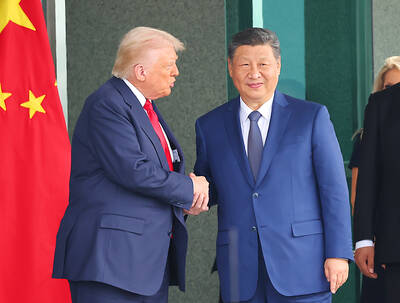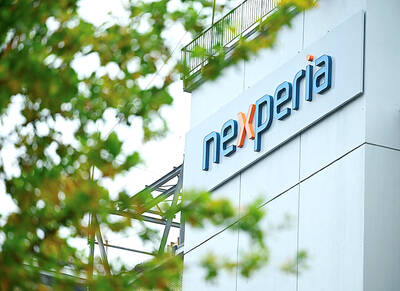A decade ago, innovative Tai-wanese flat panel display companies started investing in a cutting-edge and cost-saving organic light-emitting diode (OLED) technology in an attempt to move beyond the slim profits associated with original equipment manufacturing.
Those companies, however, have all but given up hope as high technological barriers and cutthroat competition from cost-efficient liquid-crystal-display (LCD) makers have placed them deep in the red.
"Taiwanese companies hoped to make big money from manufacturing slimmer OLED displays at lower prices than LCD panels," said Roger Yu (
"But, the dream has not yet come true as progress in developing competitive products has been slow because of poor foundry yields and performance," Yu said, adding that most companies were still struggling to break even.
Low yields have prompted LCD panel makers AU Optronics Corp (
Heavy losses have driven many pure OLED manufacturers out of the market. Singapore's Ness Display closed its doors recently because it failed to attract enough capital amid falling prices to continue operations.
Back home, optical-disk maker Ritek Corp (
"Sharp price reductions and difficulties in cutting costs are the major challenges for OLED display makers," said Kevin Liao (
Ritek said on Wednesday that it planned to sell an OLED manufacturing affiliate, Ritdisplay Corp (
"The deal will bring more resources for Ritdisplay and boost its core competitiveness as well as reduce financial reliance on the parent company," Ritek said in a statement.
DisplaySearch's Liao also said limited OLED equipment and component suppliers were behind slow improvements in the industry cost structure.
Technologically, OLED displays readily compete with LCDs in small-and-medium applications such as handset displays and MP3s palyers, but LCD makers are able to edge OLED suppliers out of the market by undercutting them on price.
Overall, OLED display shipments expanded by 15 percent to 16.1 million units in the second quarter of this year over last year, but revenues dropped 14 percent to US$112 million, according to a DisplaySearch tally.
"It's tough for Taiwanese companies to survive as they are smaller in scale than their rivals," Liao said.
Liao said those companies remaining in the industry were conservative about expansion plans.
Ritdisplay, established in 2000, has a capital value of NT$7.5 billion while
local rival Univision Technology Inc (悠景) is worth just NT$1.8 billion.
On top of that, “the competition will intensify next year as more Chinese
players are preparing to join the game,” Liao said.
Looking from a longer term perspective, Liao said there was still
opportunity in the industry. To divert from direct competition with
lower-priced LCD panels, OLED display manufacturers should target niche
market segments such as Asian handset makers, he suggested.
But Polaris' analyst Yu said he would take a wait-and-see attitude about
OLED stocks as he expected they would still have a long way to go before
making significant gains.

RUN IT BACK: A succesful first project working with hyperscalers to design chips encouraged MediaTek to start a second project, aiming to hit stride in 2028 MediaTek Inc (聯發科), the world’s biggest smartphone chip supplier, yesterday said it is engaging a second hyperscaler to help design artificial intelligence (AI) accelerators used in data centers following a similar project expected to generate revenue streams soon. The first AI accelerator project is to bring in US$1 billion revenue next year and several billion US dollars more in 2027, MediaTek chief executive officer Rick Tsai (蔡力行) told a virtual investor conference yesterday. The second AI accelerator project is expected to contribute to revenue beginning in 2028, Tsai said. MediaTek yesterday raised its revenue forecast for the global AI accelerator used

TEMPORARY TRUCE: China has made concessions to ease rare earth trade controls, among others, while Washington holds fire on a 100% tariff on all Chinese goods China is effectively suspending implementation of additional export controls on rare earth metals and terminating investigations targeting US companies in the semiconductor supply chain, the White House announced. The White House on Saturday issued a fact sheet outlining some details of the trade pact agreed to earlier in the week by US President Donald Trump and Chinese President Xi Jinping (習近平) that aimed to ease tensions between the world’s two largest economies. Under the deal, China is to issue general licenses valid for exports of rare earths, gallium, germanium, antimony and graphite “for the benefit of US end users and their suppliers

Dutch chipmaker Nexperia BV’s China unit yesterday said that it had established sufficient inventories of finished goods and works-in-progress, and that its supply chain remained secure and stable after its parent halted wafer supplies. The Dutch company suspended supplies of wafers to its Chinese assembly plant a week ago, calling it “a direct consequence of the local management’s recent failure to comply with the agreed contractual payment terms,” Reuters reported on Friday last week. Its China unit called Nexperia’s suspension “unilateral” and “extremely irresponsible,” adding that the Dutch parent’s claim about contractual payment was “misleading and highly deceptive,” according to a statement

Artificial intelligence (AI) giant Nvidia Corp’s most advanced chips would be reserved for US companies and kept out of China and other countries, US President Donald Trump said. During an interview that aired on Sunday on CBS’ 60 Minutes program and in comments to reporters aboard Air Force One, Trump said only US customers should have access to the top-end Blackwell chips offered by Nvidia, the world’s most valuable company by market capitalization. “The most advanced, we will not let anybody have them other than the United States,” he told CBS, echoing remarks made earlier to reporters as he returned to Washington